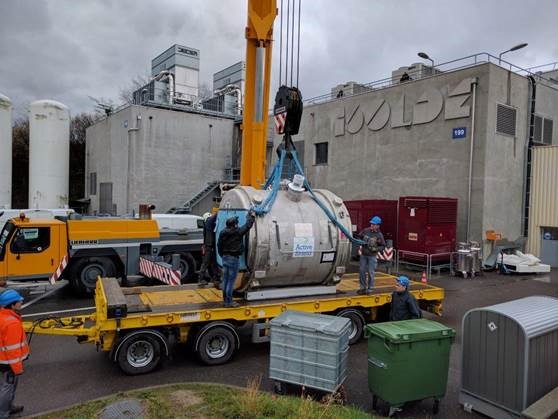UK Apprentices Assist in recycling a Hospital MRI Scanner to Study the Stuff of Stars at CERN

After spending 15 years scanning patients at an Australian hospital, an unwanted MRI machine has been recycled and given a new lease of life at the world’s biggest science experiment as a scanner of the material that makes up exploding stars.
A team of UK scientists and engineers reclaimed the superconducting magnet from an old MRI scanner, before modifying it for use at CERN to help us better understand how the Universe works. This recycling project cost about £130,000 – whereas producing a bespoke magnet from scratch would have cost £1million or more.
Professor Robert Page from our department, who leads the international collaboration that will exploit the magnet, explained a little about what the recycled magnet will enable the research team at CERN to achieve, "The ISOL-SRS project is designing and constructing spectrometers to explore subtle features of the forces that bind atomic nuclei and nuclear reactions thought to occur in stellar explosions.”
“This ex-MRI magnet is a vital component of the spectrometer to be exploited at CERN's world-leading HIE-ISOLDE facility and following its successful recommissioning we are now in a position to embark on this new and exciting science programme with our collaborators from institutions across the UK, Europe and Argonne National Laboratory in the USA."
The University of Liverpool and STFC Daresbury Laboratory contributions are quite strongly intertwined. Both the Nuclear Physics Group at Daresbury and the Physics Department at Liverpool have an interest in using the final device for physics experiments (along with much of the UK Nuclear Physics community). The mechanical design work was done at Daresbury, the detector design work was done in Liverpool and the readout system comes from Daresbury.

Image: MRI magnet being delivered to Isolde CERN
The purchase of the ex-MRI magnet and the cost of reconfiguring it for use on the ISOLDE experiment were co-funded by STFC, the University of Liverpool, the University of Leuven and the University of Manchester. It will contain advanced silicon detectors that are being built by a UK-led team as part of the ISOL-SRS project.
